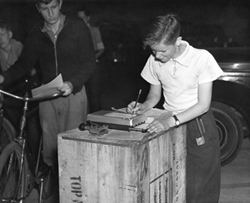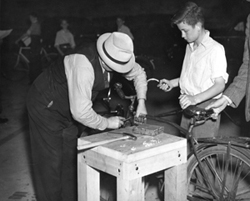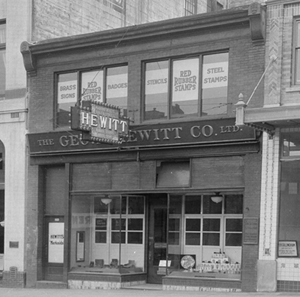|
|
|
|
|
|
|

Port Coquitlam |
|
|
|
|
|
|
|
|
|
The impetus for many of the bylaws requiring the licensing of bicycles in various British Columbia municipalities was a general belief that licensing could address two major problems; theft and compliance with the law. |
With regard to theft, the use of a license plate had the obvious benefit of providing local police with a way to identify the rightful owner of a recovered stolen bike. |
In other instances, a license plate was intended to proivde a way to identify reckless cyclists that had either broken a traffic law, been involved in a collision and fled the scene or done something else the municipality deemed to be an inappropriate use of a bicycle. |
For example, in 1947, the City of Penticton determined that riding a bicycle on a footpath or sidewalk, riding without both hands on the handlebar or "racing" on highway (without stating what constituted a race) was unlawful and subject to a fine not exceeding $100.00 (which is equivalent to $1,350.00 in 2019). If you were unfortunate enough to incur a full $100.00 fine in Penticton and could not pay, the bylaw allowed for jailing for a period not exceeding 2 months "with or without hard labour"! |
There are a number of reasons that requiring bicycles to display license plates fell out of favour by the 1970s. One was the bureaucracy required to maintain such a system and the willingness of taxpayers to subsidize the cost as the fees collected from bicycle licenses rarely covered the operation of these programs. |
Another concern was the use of police resources to enforce a system of regulation that was generally aimed at children and the negative associations this created in children towards police officers when they were busted for an enfraction (not to mention the likely ire of parents that police officers would then have to deal with). |
Finally, there was the inescapble questions about the effectiveness of bicycle licensing in terms of being able to identify dangerous cyclists (most bike are very small and not easy to see when mounted) and, more importantly, as a way to curb bike thefts. The hard reality was that license plates and stickers could easily be removed from a stolen bicycle - thereby rendering them useless as a means of identification. |
While the provincial government had taken over the production of automobile license plates in 1931, municipalities had continued to contract with private firms to produce license plates for commercial trucks and bicycles. The dominant firm in this field was the George H. Hewitt Company Limited of Vancouver, who also occassionally produced chauffeur badges for the province.
Founded in 1898, and still a going concern as of 2023, the Hewitt Company's designs and dies can be seen in many of the bicycle license plates shown in the photo galleries accessible in the left-hand column of this page.
|
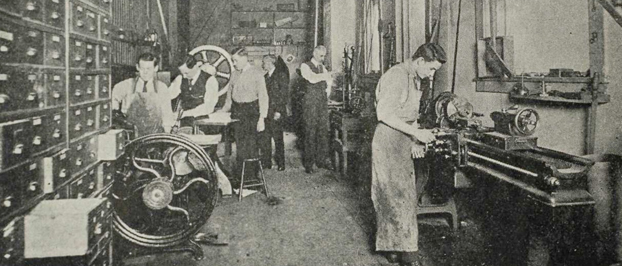 George Hewitt Workshop in 1918
George Hewitt Workshop in 1918 |
|
|
|


 Esquimalt
Esquimalt Fernie
Fernie Kelowna
Kelowna Nelson
Nelson Oak Bay
Oak Bay Penticton
Penticton
 Prince George
Prince George Trail
Trail
 Victoria
Victoria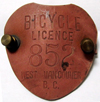 West Vancouver
West Vancouver
 Misc
Misc